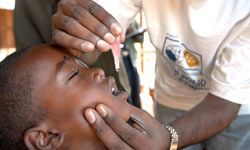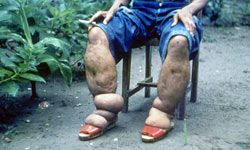There are few loftier goals than eradicating a disease. If successful, it means easing and preventing the suffering of millions of people. Unfortunately, this is easier said than done. The likelihood of actually eradicating a disease, which means completely removing an infectious illness from the face of the Earth so that it becomes extinct, is so slim that its only been accomplished once, and that was with smallpox. But, it's not for lack of trying.
So far, there have been six global disease eradication efforts. They focused on yellow fever, malaria, yaws, smallpox, polio and dracunculiasis. The first three diseases continue to harm and kill millions of people each year. Of the last three, smallpox was annihilated in the late 1970s and polio and dracunculiasis are now on the verge of eradication.
Advertisement
These few successes serve as inspiration for the scientists, health professionals, aid organizations and donors to keep trying to eliminate some of the nastiest and deadliest disease once and for all.
Read on to discover more about these efforts and learn about the top 10 eradicable diseases.





